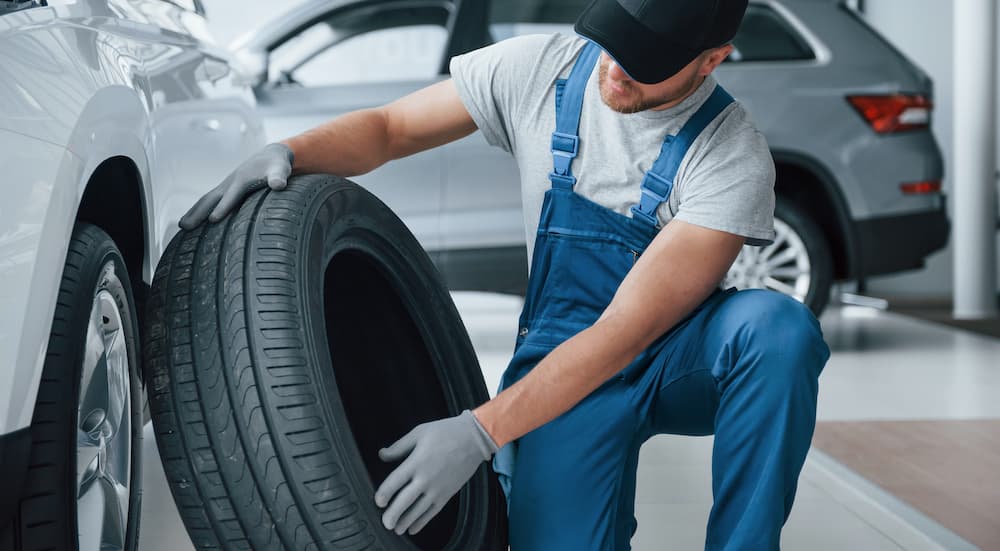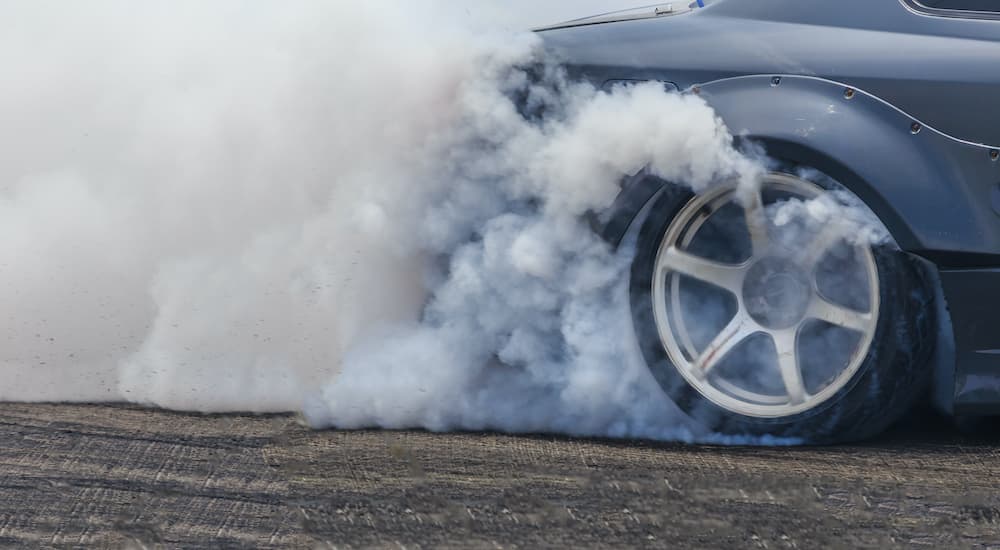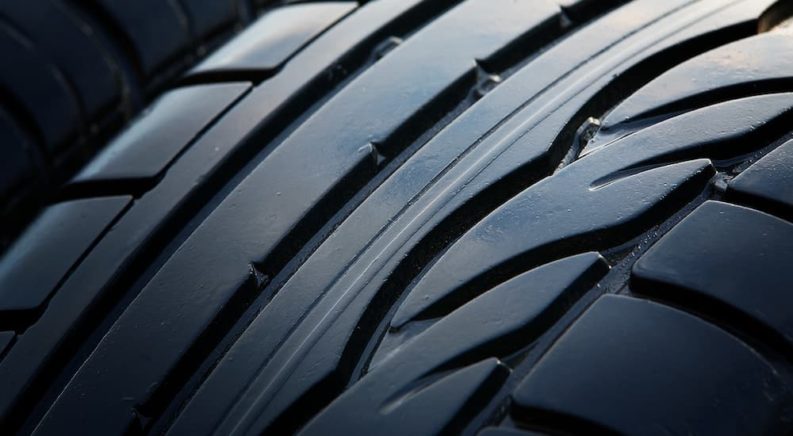So you’ve just bought a new car, and you can’t wait to visit the tire shop, toss those factory all-seasons, and get some real performance tires. The only question is, which ones? There are a ton of tire manufacturers out there producing high-quality products, and we aren’t going to get into the minutia of which brand’s tires are better. Unless you’re a professional driver, you probably won’t tell much of a difference between one ultra-high performance tire and another anyways. What we’re going to be looking at is what level of performance is right for you.
You see, there are actually a lot of different types of performance tires, and they all behave a little differently. To keep this an apples-to-apples comparison, we’ll be looking at the performance options from just one brand – but these differences will largely hold true no matter what your favorite tire brand is. Since Michelin is the widely acknowledged market leader when it comes to performance tires, that is the brand that we will be drawing our examples from.
The Michelin Pilot Sport Family
Michelin’s performance option is the famed Pilot Sport – but that is currently a family of six different tires:
- Pilot Sport All Season 4
- Pilot Sport 4 S
- Pilot Super Sport
- Pilot Sport Cup 2
- Pilot Sport Cup 2 R
- Pilot Sport A/S 3+
- Pilot Sport Cup 2 Connect
Other high-end manufacturers have a similar lineup of performance options, such as Continental’s four different ExtremeContact tires or the three different Bridgestone Potenza variants. So how do you choose between them?
Like the high-performance tire options from other brands, the Michelin Pilot Sport family can be broken down into three broad categories: all-season performance, street performance, and track performance. Each of these categories has its own particular strengths and weaknesses, so choosing the right category of performance tires is crucial to getting the driving experience that you are looking for.

All-Season Performance
- Best – Pilot Sport All Season 4
- Good – Pilot Sport A/S 3+
Not so long ago, an all-season performance tire was an oxymoron. If you wanted a tire that let you unleash the car’s potential, you had to trade off bad weather performance. Today, that is no longer the case with tires like the Pilot Sport All Season 4, Pilot Sport A/S 3+, or similar all-season performance tires from other manufacturers. While the heavier tread required to handle rain and snow means that no all-season tire can match a dedicated summer tire in the dry, modern rubber compounds and tread designs have gone a long way towards leveling the playing field.
All-season performance tires are an excellent choice for the new generation of high-performance SUVs and are also a good fit for sports sedans or even sports cars if you anticipate driving in mild winter weather. However, if you expect to encounter heavy snow and ice, you will need to sacrifice good weather performance and get some real winter tires.
If you want a Michelin all-season performance tire, which one should you choose? It’s actually pretty simple – the Pilot Sport All Season 4 is the latest Michelin all-season performance tire and was just released in 2020. The Pilot Sport A/S 3+ is an older design that hit the market in 2016. In general, when you see numbers at the end of a tire’s name, they’re there for a reason. Tire manufacturers are continually updating their designs and usually have a fairly simple naming scheme to keep track of the changes.
Street Performance
- Best – Pilot Sport 4 S
- Good – Pilot Super Sport
These two summer tires represent the traditional high-performance tire. They offer a good mix of dry and wet performance, making them a solid choice for enjoyable daily driving – at least during the summer. When the temperature falls, their grippy rubber compounds lose their edge, and performance plummets. But as long as you keep them in their element, these tires will give you everything you could ask for and more.
Ultra high-performance summer tires like the Pilot Sport 4 S and Pilot Super Sport are the go-to option for any sort of performance car. Whether you have a sports car or just a sedan you enjoy driving, this type of tire will take the vehicle to the next level. While the naming convention is a little less obvious, choosing between Michelin’s two street performance tires is again largely a matter of age. The Pilot Super Sport is the third generation ultra-high performance tire from Michelin, replacing the Pilot Sport 2 in 2010. The Pilot Sport 4 S was introduced in 2017 and is the successor to the Pilot Super Sport (the “S” is part of the name to distinguish it from a Europe-only Pilot Sport 4).

Track Performance
- Best – Pilot Sport Cup 2 R
- Better – Pilot Sport Cup 2 Connect
- Good – Pilot Sport Cup 2
While ultra-high performance street tires like the Pilot Sport 4 S are an incredible option for daily driving, they still sacrifice some dry performance to remain manageable in the wet. But if you are looking for the absolute maximum you can wring out of your car, then you will want to look into a track-oriented tire. These options have just enough tread to remain street legal and get around certain competition rules about running full racing slicks.
The Pilot Sport Cup 2 is the oldest of these three designs, arriving on the market in 2013. The Pilot Sport Cup 2 Connect is its direct replacement, debuting in 2019. However, the largest difference between these two options is not raw performance but tire life. The new Pilot Sport Cup 2 Connect has a treadwear rating of 240 instead of the 180 rating of the older tire and offers 20% deeper tread depth. This makes it a much better choice for endurance racing or anyone looking to save money over the course of a few competition seasons.
But where does the Pilot Sport Cup 2 R come in? Introduced in 2018, it is slightly older than the Pilot Sport Cup 2 Connect. However, the Pilot Sport Cup 2 R is hyper-focused on dry performance. With an extremely shallow tread depth and a treadwear rating of just 140, this tire is just a half step away from being a pure racing slick. In internal Michelin testing with a Porsche 911 GT2 RS at Nardo, they recorded a 2.9-second advantage with the Pilot Sport Cup 2 R over the Pilot Sport Cup 2. However, this is not a tire to take out on the street.
Tires Make the Car
Upgrading to the right set of high-performance tires makes all the difference. The number of options available today is incredible, not only from Michelin but also from all the major brands. Continental, Bridgestone, Pirelli, Goodyear – tire manufacturers around the world are continuing to push the boundaries of what a tire is capable of. However, this wealth of choices means that doing your research is more important than ever. The Michelin Pilot Sport All Season 4 and the Michelin Pilot Sport Cup 2 R are both marvels of engineering, but they are designed for very different types of driving.
Finding the right tires is also not only a matter of understanding the available options but of understanding your needs and driving style. While it may be tempting to go out and buy the grippiest set of tires available, unless you have an actual track car, you are probably better served with something a little more well-rounded. You may not need to opt for a full all-season tire, but consider the road conditions that you will likely encounter when driving. Now go out there and get some real performance tires for your car!

